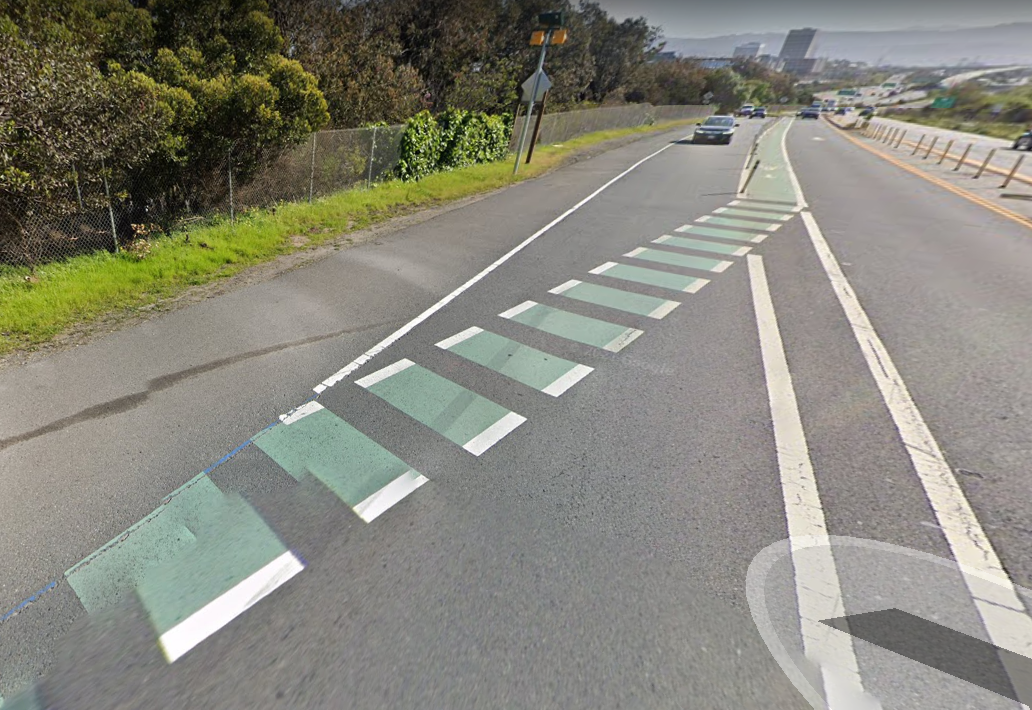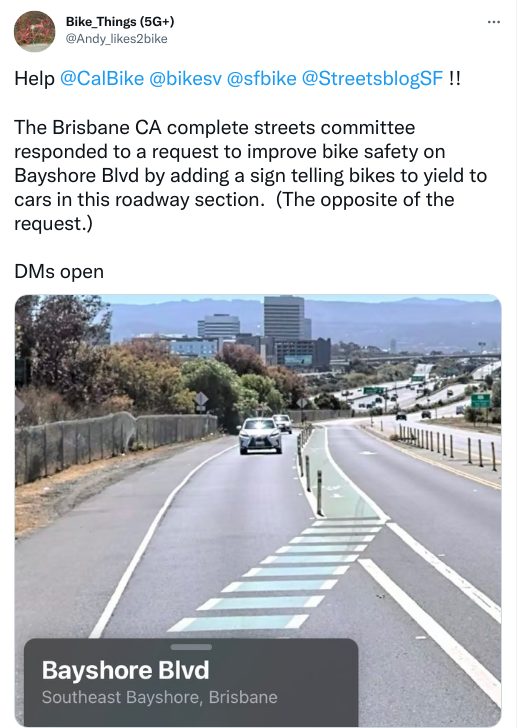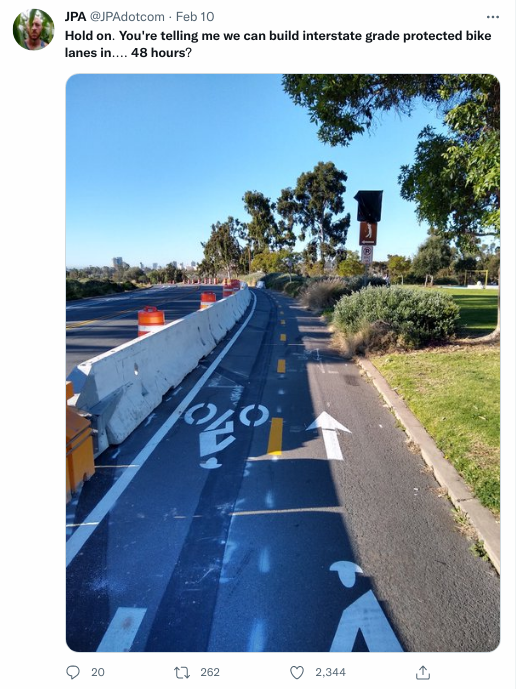A sign telling cyclists to yield to motorists.
That, apparently, is the solution recommended late last year for the patently unsafe intersection in the lead photo of Bayshore Blvd at the Northbound 101 Off-Ramp in Brisbane.
Last Fall, advocates in Brisbane asked Streetsblog to spotlight this intersection. There are many such requests and it's impossible to cover them all. But when I caught wind that the solution the Brisbane "Complete Streets Safety Committee " came up with was not to make this safe for cyclists, but rather to once again prioritize the fenders of motorists, I had to write something.
"We want to make the bike lane safer, but we don't want to make it less safe for motorists," said Justin Yuen, an engineer who participates in the committee meetings, during last fall's discussion. "This off-ramp is just not an area where cars expect to stop, and by requiring the motorists to yield to cyclists, that would increase the risk for rear-end collisions."
"I've driven this area several times," said Mario Garcia, the Brisbane police commander who also participated in the meeting. He added that one of his sergeants even witnessed a cyclist struggling to get across and that it almost caused a "three or four vehicle, chain-reaction crash."
The committee also concluded there wasn't enough money to separate this lane and make it safe, even though Caltrans is currently spending hundreds of millions to widen 101.
Perhaps it's because my grandfather was a doctor, but the conversation reminded me of the old medical practice of leeching. I don't mean to compare the committee members to parasitic, blood-sucking worms. I'm talking about how for 2,000 years "physicians" treated sick patients by putting leeches on their bodies to drain them of bad humors.
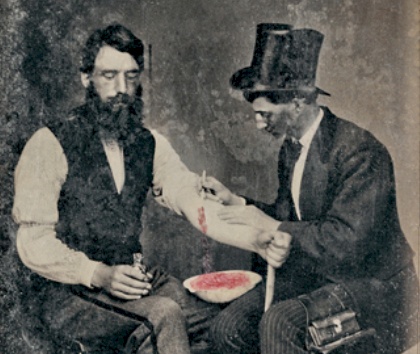
And most people thought that was okay.
I wonder what it must have been like for those doctors and scientists at the end of the 19th Century who actually looked at data and analyzed results. What was it like for "radicals" such as Louis Pasteur to try to convince people it was unethical, harmful, and completely nuts to drain the blood out of people as a treatment for disease?
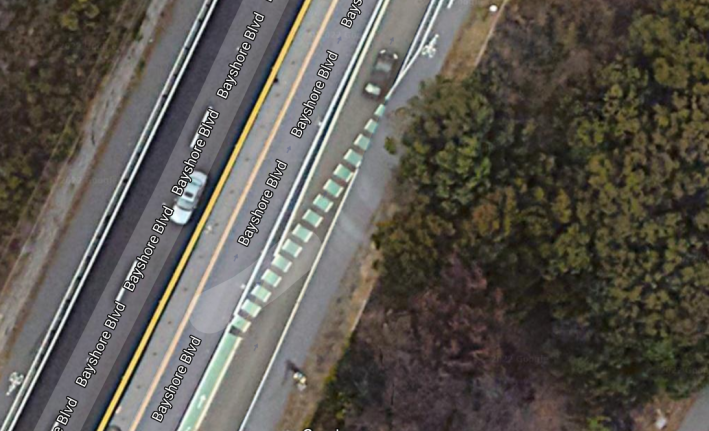
Likewise, how could anyone think it was okay to put an un-signalized, diagonal bike-merge across a freeway off-ramp? Commander Garcia talked about how the intersection was unsafe because it might cause motorists to crash. What does he think happens to the body of an unprotected cyclist when it is hit by a fender at 45 mph?
Of course, Caltrans shares most of the blame. As the committee pointed out, Caltrans won't let them build anything on their property (which is most of this ramp) and the state DOT refuses to change anything themselves.
But that doesn't let Brisbane off the hook. How about putting K-rail along both sides of that bike lane where it's wedged between high-speed traffic lanes? How about adding rumble strips, flashing lights, and other tactile reminders to motorists to slow down as they reach the bike crossing? How about reducing the crossing distance and sharpening the angle to slow motorists and improve sightlines? How about a signal for the off-ramp? And if none of that is acceptable, then sorry Brisbane, crash the budget if you have to, but build a tunnel or a flyover for cyclists and pedestrians as if lives depend on it--because they do.
The "physicians" who used leeches at least thought they were saving lives. But traffic officials in the U.S. today know damn well that they're building (and not fixing) deathtraps. The American crash fatality rate is more than twice that of countries where city planners value human life over automobile throughput (and fenders).

Building or failing to fix deadly infrastructure is maleficence of the highest order. And until bureaucrats and politicians start behaving as if people's lives are at stake, they are complicit in each and every instance of modern bloodletting, via traffic violence, that robs people of life, limb, and loved ones.
